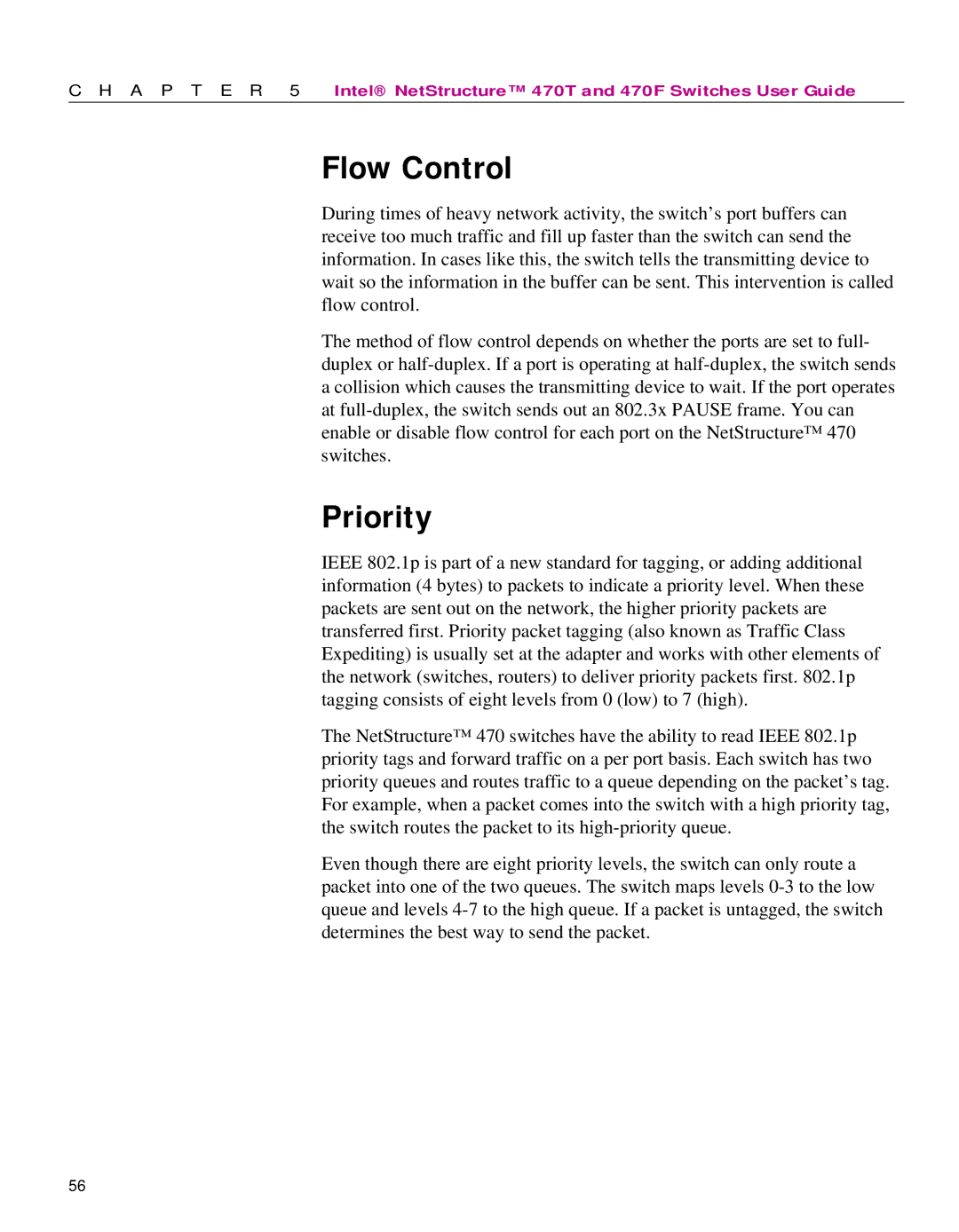C H A P T E R 5 | Intel® NetStructure™ 470T and 470F Switches User Guide |
Flow Control
During times of heavy network activity, the switch’s port buffers can receive too much traffic and fill up faster than the switch can send the information. In cases like this, the switch tells the transmitting device to wait so the information in the buffer can be sent. This intervention is called flow control.
The method of flow control depends on whether the ports are set to full- duplex or
Priority
IEEE 802.1p is part of a new standard for tagging, or adding additional information (4 bytes) to packets to indicate a priority level. When these packets are sent out on the network, the higher priority packets are transferred first. Priority packet tagging (also known as Traffic Class Expediting) is usually set at the adapter and works with other elements of the network (switches, routers) to deliver priority packets first. 802.1p tagging consists of eight levels from 0 (low) to 7 (high).
The NetStructure™ 470 switches have the ability to read IEEE 802.1p priority tags and forward traffic on a per port basis. Each switch has two priority queues and routes traffic to a queue depending on the packet’s tag. For example, when a packet comes into the switch with a high priority tag, the switch routes the packet to its
Even though there are eight priority levels, the switch can only route a packet into one of the two queues. The switch maps levels
56
